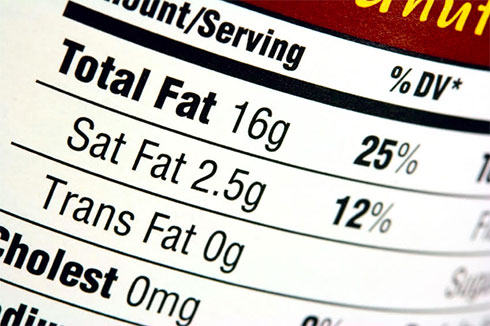
Hello everyone! I am very excited to be able to write on 248AM. I am a clinical nutritionist that has worked in various areas including food safety, pediatrics and now do a variety of work with adults. I understand that nutrition can be a confusing subject and many of us have different opinions of food and health. My goal is to help you all make an informed decision to achieve a better and healthier life!
Many of us are health conscious and sometimes can’t help but feel deceived once looking at the nutrition label properly. They aren’t the easiest to figure out, some are complicated while others are simply deceiving. Here are a few tips to help you navigate through that nutrition label the next you pick up packaged food.
- Serving size is KEY! Many manufacturers use the smallest serving size possible to lure you into a lesser caloric amount. You’d be surprised to know that you could be having 5 or more servings by consuming the entire food in your package. To be more accurate with calculating your calories, proteins or fats make sure you check how many servings their information covers, as well as how many servings you’re going to eat.
- Calories are not everything. Although many of us believe that this number could be the most important on the nutrition label, but you could be wrong. Where your calories are coming from is far more important. Try to avoid foods that have a bulk of their calories coming from saturated or trans fats or sugars. Also, keep in mind that “Calorie-Free” means less than 5 calories per serving, this number could add up depending on how many calories you choose to indulge in.
- Fats are important, but not only for how many calories they provide but more so for which type of fat is being used in your food item. You want to make sure your fats are not coming from saturated or trans fats (they lower the good cholesterol and increase the bad ones). Instead opt for a product that contains more unsaturated fats, and definitely don’t be fooled by a “Zero Fat” label on the package. According to the recent regulations you can now place a “Zero Fat” label in your package if it contains less than 0.5g fat per SERVING! (Again serving plays a big role here)
- Carbohydrates could be both good or bad. Instead of focusing on how many grams of carbohydrates you food item is provide, I suggest you look at the source of carbohydrates. Is it mostly sugar? Or is the bulk of your carbohydrate intake coming from fiber? Anything with less than 0.5g sugar per serving is legally labeled as “Sugar-Free.” As for the fiber, you should aim to get more than 3g per serving (especially in cereals and whole grains).
- Ingredients are, in my humble point of view, the most important piece of information you can get out of a nutrition label. Foods in an ingredient list are listed from highest content level to the lowest; therefore if sugar, dextrose, or high fructose corn syrup are one of the first 3 ingredients on that list expect to be consuming a high sugar food. It is important that you recognize the foods listed because ultimately you are what you eat!
I personally believe that buying food items that do not require any food labels (fresh fruits, vegetables) is much easier and healthier than buying processed or packaged ones. Either way, make sure you read that label to make your informed decision.
“I think about food because you can’t think without it”
Post by Hyatt Al Sayegh, a Clinical Dietitian and Dr. Sears Health Coach.
Founder of Fork Fed.
Photo Source

3 replies on “Fork Fed: Are you Reading your Labels?”
Thank you for bringing to us some valuable information.
Welcome aboard Hyatt!
recently watched a TED talk by Jamie Oliver, where he was talking about how something which is full of sugar, can still be labelled as low fat.